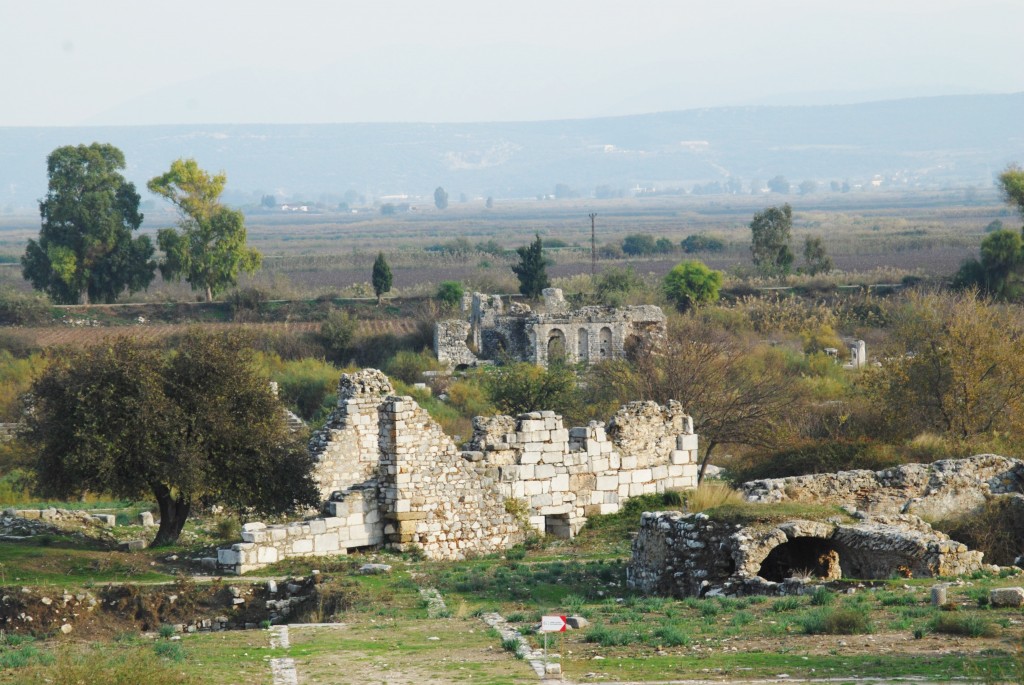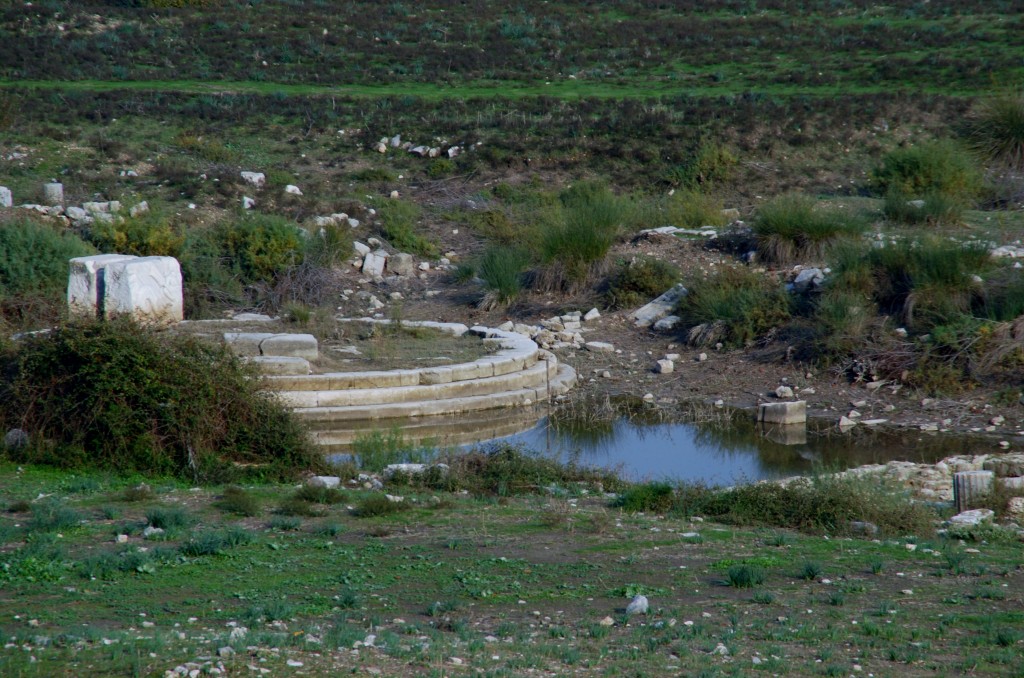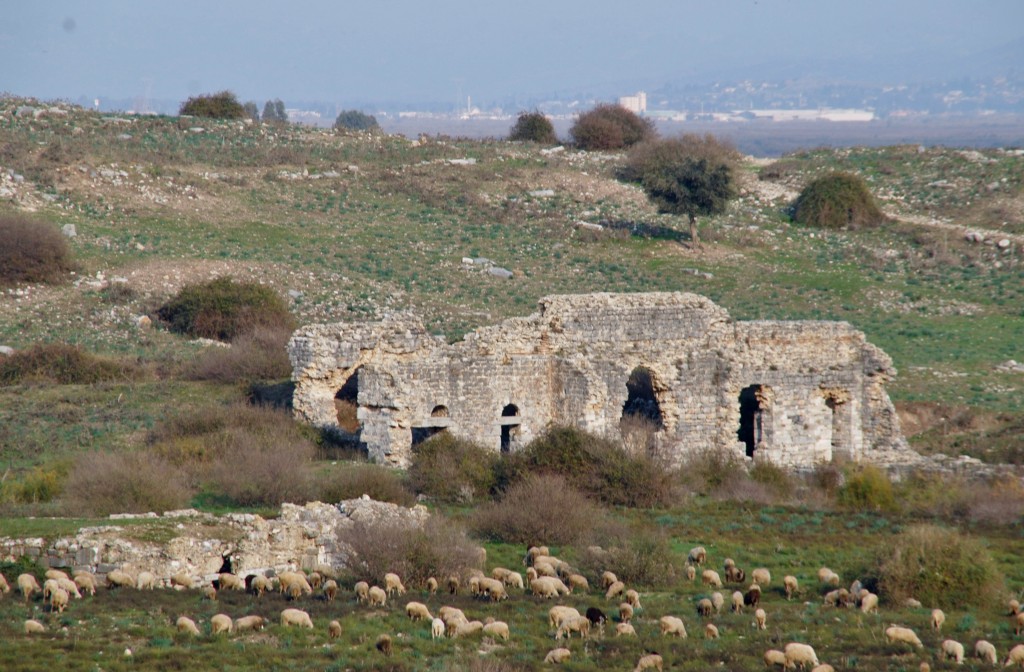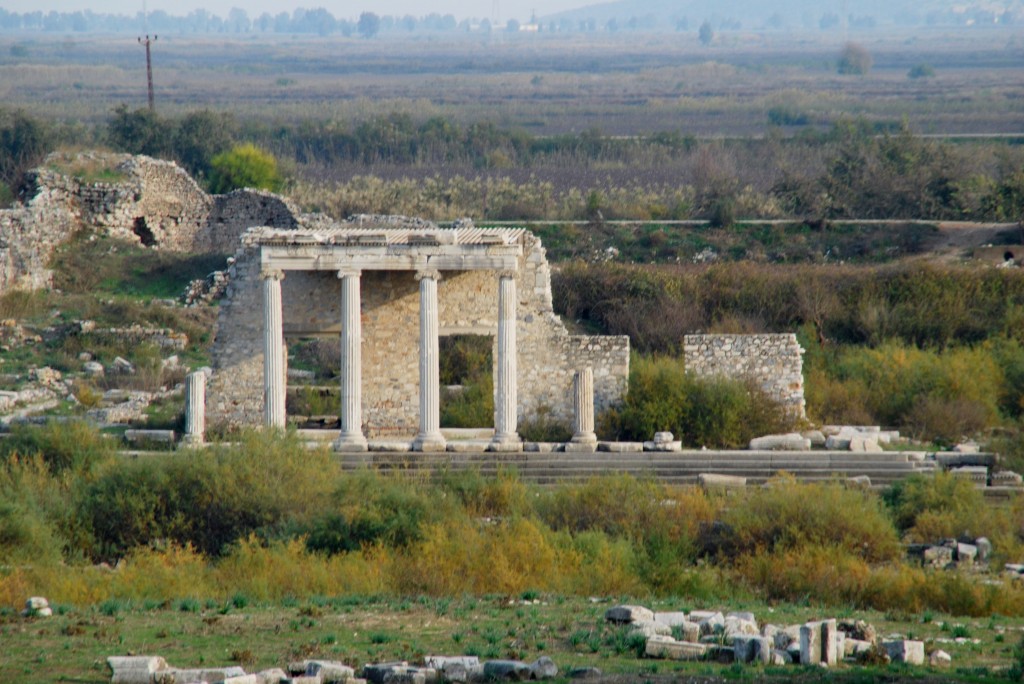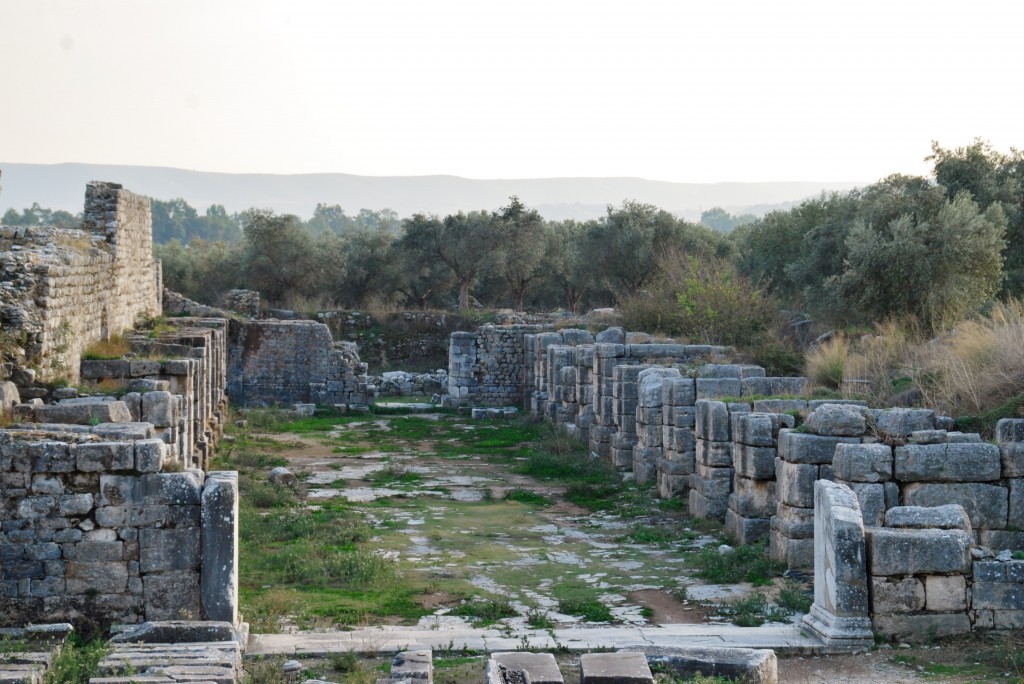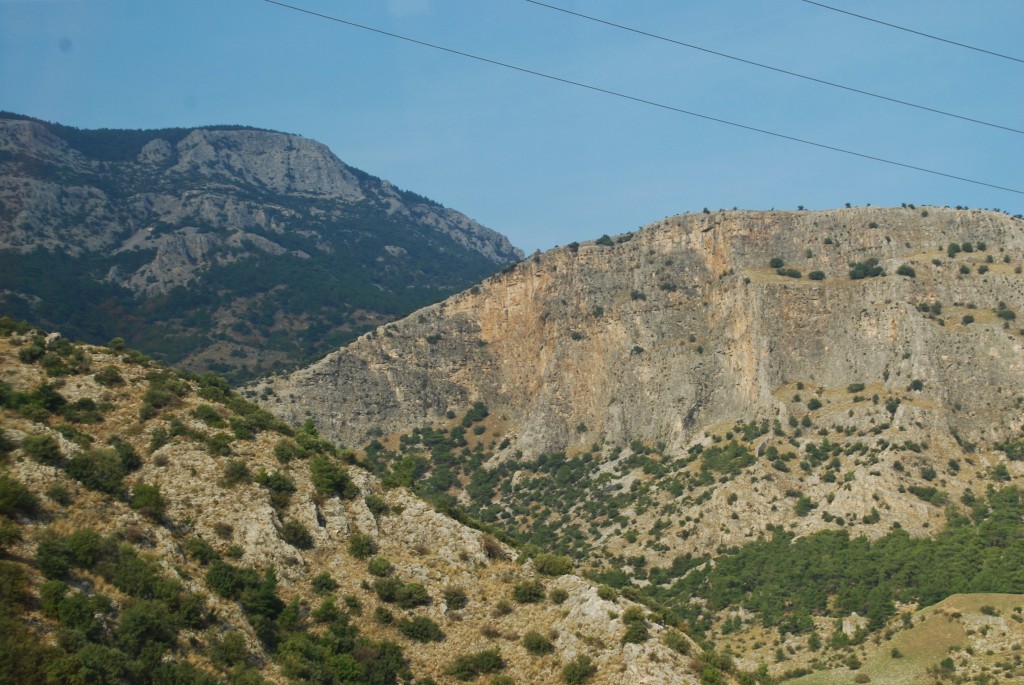Approaching the archaeological site of Miletus, it is obvious that there is a large influence of Roman architecture and tradition that once made an impact on this city. One of the more important customs was that of public bathing.
In the city of Miletus there were three bathing areas: the Capito Thermae, Humei Tope Thermae (in the north) and the Faustina Thermae operating in the south. During the First Century BC, Cnaeus Vergilius Capito donated the resources for a large building complex which would contain an exercise area and baths. An inscription located on the northern section of the Ionic Stoa, confirms his donation. Because baths were more of a social activity among the Romans, this compound was perfectly situated between the Delphinion and the Hellenistic Gymnasium. In the Palaestra, the exercise area, was a swimming pool. There were three sections to the baths (Thermae) which were the dressing rooms, the warm bath and the hot bath.
The Delphinion was built near the Harbour of Lions as a sanctuary of Apollo Delphinios who was the patron saint of sailors and ships. It was first constructed in the 6th century BC, and went through several updates before it was destroyed in the 5th century AD. The ruins clearly show the remains of a circular temple which was once protected by a roof and sheltered the altar where the residents brought their offerings. There were inscriptions found on the inner walls of the stoa and on the stelae indicating that this location was also once the city’s archive.
Many of the ancient ruins were not without a Nymphaem, which was one of the most important features of the city. This fountain was considered to be one of the most impressive of all of the Ionian cities. A three story structure with a façade that displayed Corinthian columns, it is said to have looked much like the façade of the Library of Celsius in Ephesus. You can find the Nymphaem on the western part of the city between the northern Capito Thermae and the southern North Agora and the Gymnasium of Eudemus. The structure also contained niches and pedestals on which statues would be displayed. The statues represented gods and demi-gods and it was estimated that there was a total of 27 throughout the building.
The South Gymnasium also known as the Gymnasium of Eudemis, was built on a north to south axis on the southern part of the city. On the esatern side of the Sacred way leading to the sanctuary of Didymia is an Ionic Stoa. It was quite long with seven steps leading up to the 36 columns supporting a beautifully decorated frieze. The original structure was built during the Flavian dynasty and further alterations were completed during the time of the Emperor Trajan.
Within close proximity to the theater were the Faustina Baths, which were built in the second century AD under the direction of Marcus Aurelius’ wife. These were the dressing rooms for the baths. At its height, the baths were an extensive complex with large fountains in various shapes such as the river god Meander, a small lion and other statues of the gods.
The building was a single story structure which included hot and cold baths, an area for physical exercizes and exquisite sculpture decoration. There were 13 rooms on each side which acted as changing rooms for the visitors. There were also beds provided in these rooms for the visitors in the event that they would want to rest.
While visiting Miletus, it is a bit difficult to imagine that this city was once a port town, situated on a peninsula, with three harbors on the west and one on the east. The harbors have since silted up to the point that the site now sits 5 miles inland. Today it is a popular shore excursion from the cruise lines that port in Kusadasi and is well worth the visit if you have an interest in ancient ruins, history and religion.
Have you had the pleasure of visiting Miletus? What aspects of the ancient city did you find fascinating? I would love to hear about your travel experience if you will kindly leave a message in the comments section below. Many thanks for escaping away with me to Miletus and I hope you have many Happy Travels in your near future!
For more information about the beautiful, exotic country of Turkey, check out the following links!
Topkapki Palace
The Blue Mosque
Hagia Sophia
Spice Bazaar and Hippodrome
Ephesus, Turkey: A Journey Back in Time
A Turkish Carpet Demonstration
Kusadasi and its Symbol of Peace
The Theater of Miletus
